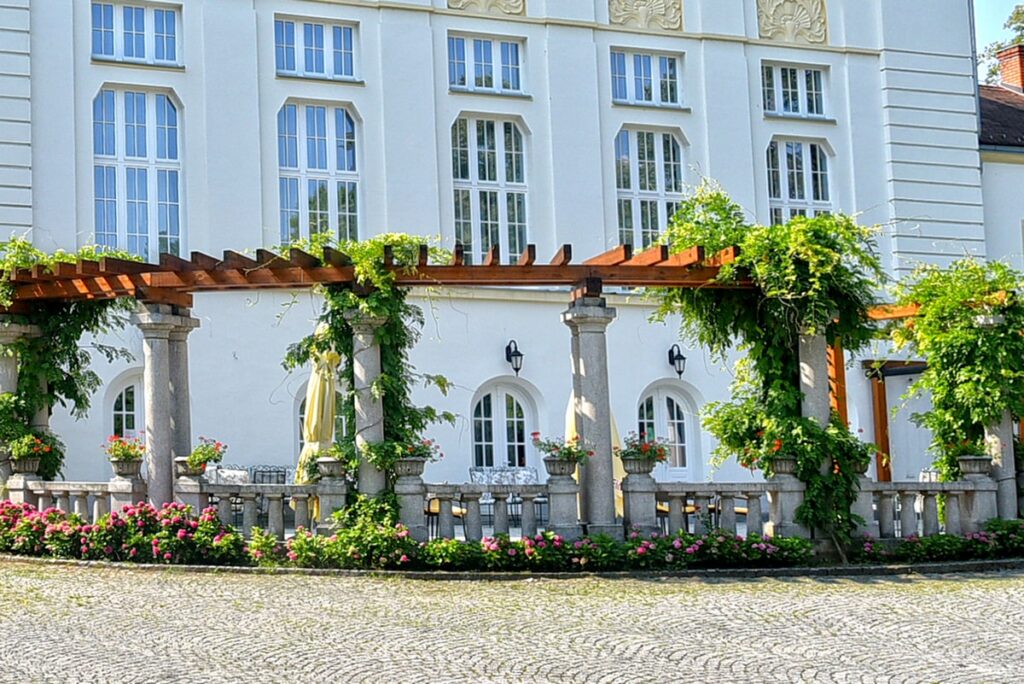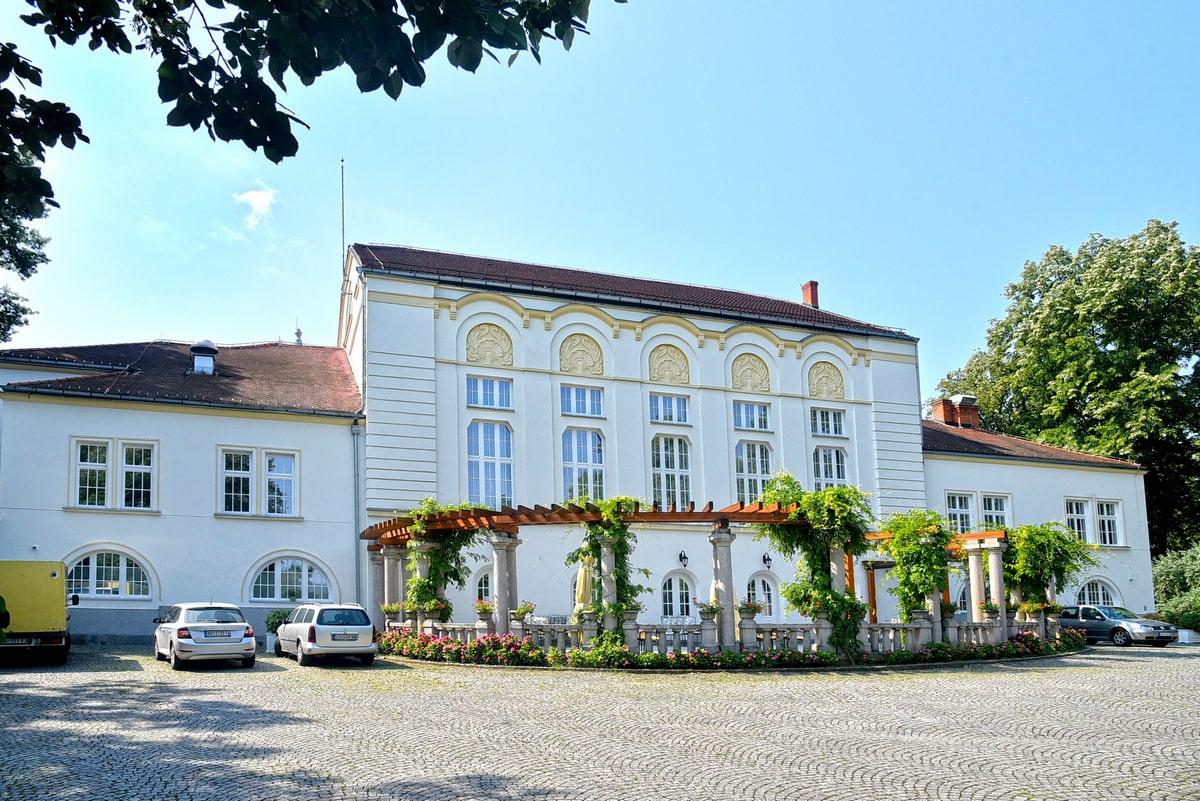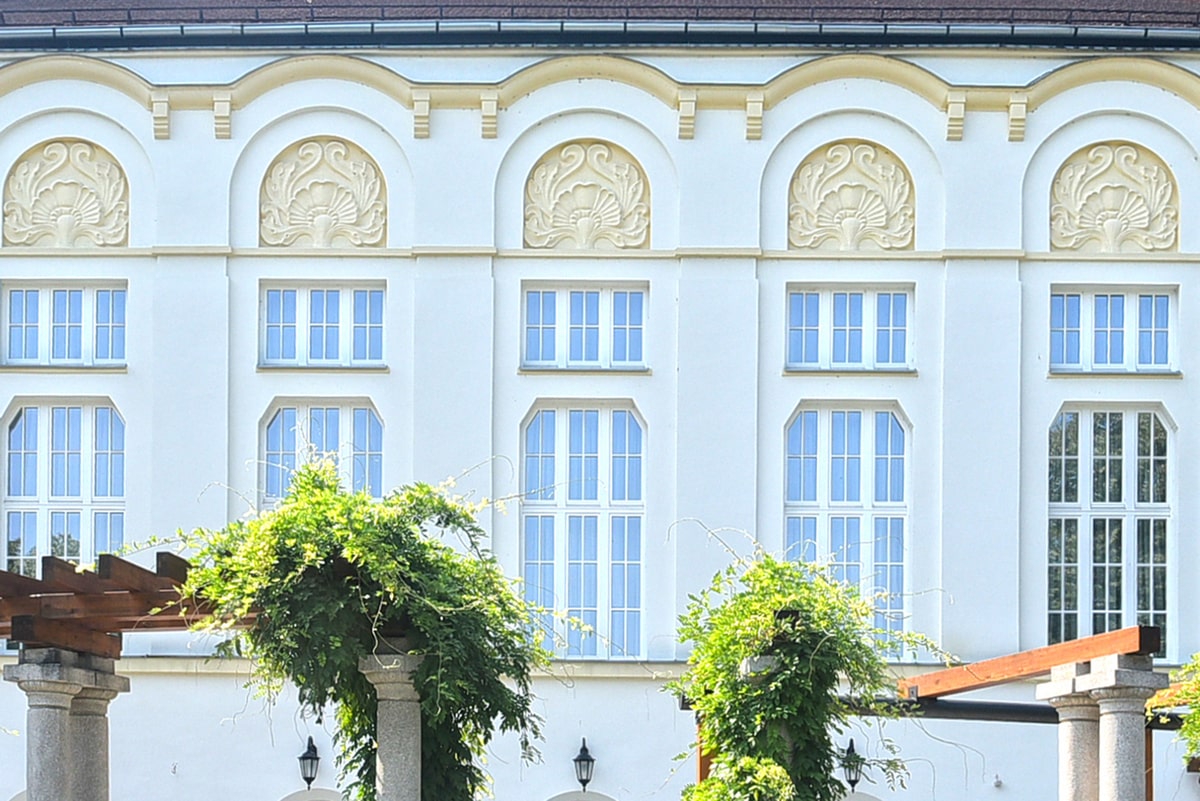Castles of Serbia
Kur Salon
Banja Koviljača
The name and architecture of the building come from the German language, from Vienna, since King Alexander I wanted to imitate the Viennese Kursalon (in German and French “Salon for treatment (cure)”). It is interesting that, unlike the Viennese one, where in the beginning only treatment and drinking of medicinal water were allowed, the Kur Salon in Banja Koviljača was predetermined for entertainment since its opening. The building consists of a ceremonial hall – dance hall with 450 seats, restaurant hall with 220 seats, board hall with 150 seats, two oval and two round lounges, two summer terraces and a spacious parking lot. It was designed by architects Dragoslav Đorđevic and the Russian married couple Nikola and Olga Krasnov, while Milan Minic, an architect and painter, was in charge of the interior. Until the Second World War, it was the favourite place of residence of the royal family Karađorđević, which is why Koviljača received the epithet “royal spa”. Krasnov is known for designing many palaces in Belgrade, including the palace of the Government of Serbia, and he is known for his eclectic style, which he brought from the Russian Empire as a “White Russian”.
In front of the salon there is a spacious park, with busts of two kings, Peter I and Alexander I Karađorđevic. It was created in the image of Western-Europeans and, which covers an area of 40 ha, is the second largest park in Serbia. Located at the foot of a hornbeam, Austrian oak and beech forest, the spa park has been tempting with its appearance and beauty since the beginning of the 20th century, and just in the centre of this open-air nature museum is a grandiose fountain, which in recent history originally replaced a slightly smaller fountain. Over eighty species of trees, beautiful flower arrangements like those in the summer residences of kings and spacious grassy areas make a walk in this park special and unusual. Preserved pre-war villas Dalmatia and Herzegovina also contribute to the ambience, as well as the bathhouse of King Peter I, which evoke nostalgia among visitors.


The name and architecture of the building come from the German language, from Vienna, since King Alexander I wanted to imitate the Viennese Kursalon (in German and French “Salon for treatment (cure)”). It is interesting that, unlike the Viennese one, where in the beginning only treatment and drinking of medicinal water were allowed, the Kur Salon in Banja Koviljača was predetermined for entertainment since its opening. The building consists of a ceremonial hall – dance hall with 450 seats, restaurant hall with 220 seats, board hall with 150 seats, two oval and two round lounges, two summer terraces and a spacious parking lot. It was designed by architects Dragoslav Đorđevic and the Russian married couple Nikola and Olga Krasnov, while Milan Minic, an architect and painter, was in charge of the interior. Until the Second World War, it was the favourite place of residence of the royal family Karađorđević, which is why Koviljača received the epithet “royal spa”. Krasnov is known for designing many palaces in Belgrade, including the palace of the Government of Serbia, and he is known for his eclectic style, which he brought from the Russian Empire as a “White Russian”.
In front of the salon there is a spacious park, with busts of two kings, Peter I and Alexander I Karađorđevic. It was created in the image of Western-Europeans and, which covers an area of 40 ha, is the second largest park in Serbia. Located at the foot of a hornbeam, Austrian oak and beech forest, the spa park has been tempting with its appearance and beauty since the beginning of the 20th century, and just in the centre of this open-air nature museum is a grandiose fountain, which in recent history originally replaced a slightly smaller fountain. Over eighty species of trees, beautiful flower arrangements like those in the summer residences of kings and spacious grassy areas make a walk in this park special and unusual. Preserved pre-war villas Dalmatia and Herzegovina also contribute to the ambience, as well as the bathhouse of King Peter I, which evoke nostalgia among visitors.

The following curiosities are connected to the Kur Salon: the first casino in the Balkans was opened here, the first Miss Yugoslavia pageant was held, musicians paid to play at the Kur Salon instead of being paid, and King Peter II Karađorđević here after the April bombing declared mobilization. Regular visitors were Branislav Nušić, Žanka Stokić, Dobrica Milutinović, ministers, generals, and the guests were entertained by the then most popular European singer – Sofka Nikolić. Congresses of Yugoslav women were held here, who then began to fight for their rights. Emir Kusturica’s film “When Father Was Away on Business “, which won the Palme d’Or at the Cannes Film Festival, was also shot at the Kur Salon, as well as Zdravko Šotra’s TV series “Invincible Heart”.
After a long series of years of neglect and decay, in 2016, the renovation began, which would return the building to its former glory. It was renovated and ceremoniously put into operation on December 30, 2018. It is now in a representative condition and within it there is an elite restaurant.
The mansion is open to visitors.
This project was supported by the Ministry of Culture and Information of the Republic of Serbia.





